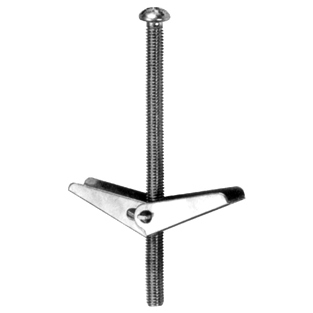I'm no engineer, but if I had to do it, I'd cut out a piece of 3/4" plywood, and then use toggle bolts to mount the plywood to preferably 3 but at least two metal studs, with several toggle bolts per stud. Then I would screw the TV mount into the plywood. This is assuming the drywall is directly mounted on the metal studs (which isn't always the case).
However, doing it the way as described in the thread that W. K. Lis linked above is also an option, with the mount directly toggle bolted into the studs.
It's interesting they mention the Monoprice mounts though since they're less sturdy to begin with, and there may be some flex in the metal.
While it is possible to mount only into drywall as described in that video, it's pretty unsafe in my opinion. If you never ever move the TV, then it may be OK, but many mounts have tilt (up/down and/or sideways), and a few even extend from the wall somewhat. Those mounts put a lot of leverage on the mount points, and that can cause the mount points to rip through the drywall. And if not through, then a little bit through, which will loosen the mount points. I certainly wouldn't use plastic drywall anchors either. Toggle bolts through drywall are definitely better, but still not ideal. Drywall is simply inherently weak. It also depends on the TV. Obviously an uber thin 32" LED is going to be a lot lighter than a 50" plasma.
Meanwhile, I did the framing in my basement in wood. I knew where the TV was going to be, so I just made sure the framing was re-inforced in the appropriate spots, with horizontal braces. Sooo much easier... Even non-re-inforced 2x4 studs are more than fine.
By the way, I just had to deal with something similar at my mom's place. Her closet's shelving with integrated clothes' hangar bar was mounted into the drywall. It looked prefectly fine, until my mom started hanging her heavy clothes onto it, and putting some boxes on the shelf. The drywall anchors all ripped right through. So, I drilled holes into the cement in behind and screwed fasteners directly into the cement. Much more sturdy. Toggle bolts in this instance wouldn't work anyway. There was a small space between the cement and the drywall, but there were no metal studs in that spot. So I suspect the drywall was mounted onto shallow metal rails which were in turn mounted on the cement. Toggle bolts wouldn't work because there wasn't enough space to insert them. You'd hit the cement before the entire wings of the toggle bolts went through, so the wings (or whatever they're called) wouldn't open up. This was a wall between two units, and I'm guessing many condos are built this way for common walls between units. It's the interior walls that more consistently have the metal studs.








